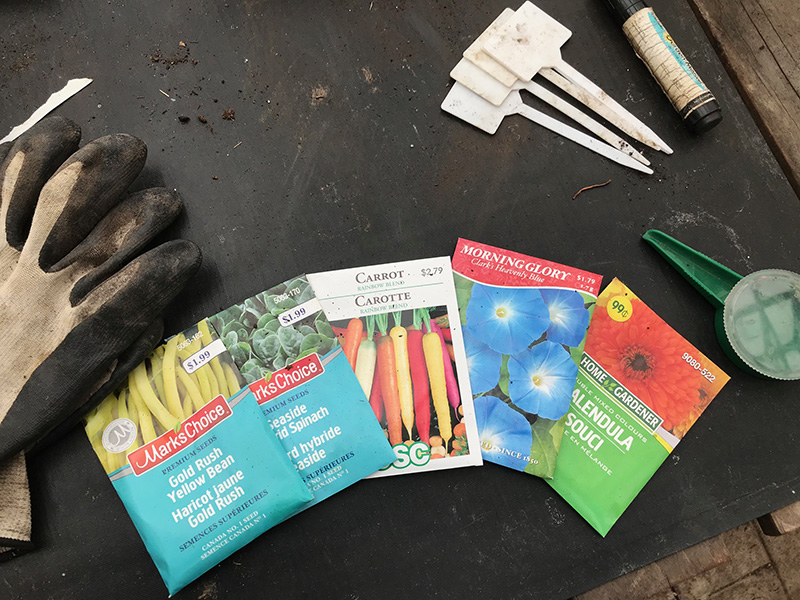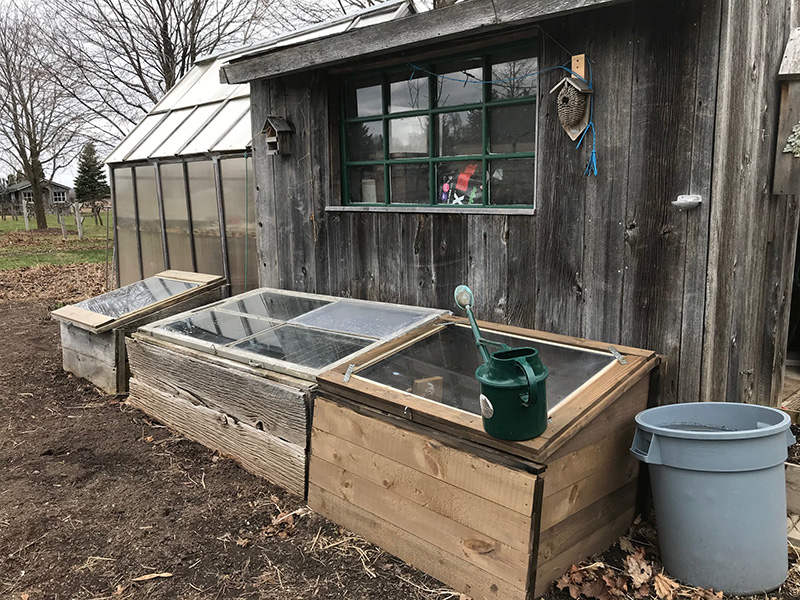Our Top 10 Seed Starting Tips
Seed Starting: A Necessary Act of Hope
Our Top 10 Tips
By Mark and Ben Cullen
https://www.instagram.com/markcullengardening/
https://www.facebook.com/MarkCullenGardening/
Starting a seed is an act of optimism. You sow, water and hope. While we continue our mutual journey with COVID 19, seed starting has a special appeal. You can grow your own food while enjoying a useful diversion from the daily news.
Sure, we have all suffered our share of failures in the garden. Yet every spring we challenge ourselves to find hope for another harvest. Even when things don’t work out as planned, there is usually something to show for our efforts and something learned for next year.
We like to say, “there is no such thing as failure in the garden, only composting opportunities.”
April is the perfect time of year to start cool-loving crops such as cabbage, onion, leeks, leafy greens, chives and parsley from seed for transplanting in May.
 Once you have grazed the seed racks at your nearest garden retailer, or put in your order with the seed “catalogue” or on-line company, here are a few tips for getting started sooner rather than later:
Once you have grazed the seed racks at your nearest garden retailer, or put in your order with the seed “catalogue” or on-line company, here are a few tips for getting started sooner rather than later:
- Gather containers –purpose-made seed starting trays, reused dairy containers, or whatever other vessel you can imagine. Drainage is important: cut holes if there aren’t any. There are great tutorials online featuring how to make biodegradable seedling pots from old newspaper. You wouldn’t offend us if you use our weekly column for this purpose.
- Sanitize your containers if they have been used for growing seeds before. Skipping this step can cause seedlings to shrivel up and collapse – the result of “damping off”, a soil-borne disease often caused by dirty trays or pots. Mix 1-part bleach to 10-parts water, give everything a good scrub and a thorough rinse.
- Growing medium. You can buy a pre-mixed seed starting soil, or make your own with equal parts peat moss, vermiculite and sharp sand. Coconut coir, a by-product of the commercial coconut industry, can also be mixed in equal parts with worm compost and perlite for an ideal growing medium.
- Sow seeds according to the depth and density listed on the package. For smaller seeds, it is often easier to sprinkle them on the soil, then sprinkle more soil on top. Firm with your fingers.
- Water carefully to avoid washing away the seeds. Apply a fine mist of water from an atomizer bottle to start, then switch to watering from a can as the seedlings become anchored with a root. Allow the soil to dry slightly between watering.

- Cover with any type of clear plastic lid or bag to create a humid environment. If evidence of fungal disease such as powdery mildew appears, remove the cover for air flow or prop it up using a popsicle stick.
- Heat mats are optional –while they help speed up some vegetable seeds, they are not necessary if you start early enough. You can also start heat-loving seeds on top of the fridge for similar effect. This works for starting begonia tubers also.
- Light is important once the seed has germinated and the first green leaves appear. For many seedlings, a sunny south-facing window will suffice, provided plants are rotated daily to avoid getting lopsided. If you opt for artificial light, adjust it to 10 or 14 cm above seedlings for 15 hours per day.
- Fertilize once multiple pairs of leaves start to appear. A water-soluble 5-15-5 fertilizer works well.
- “Hardening off” helps seedlings adapt before transplanting. Choose a warm, sunny day to leave the plants outdoors for a few hours, extending their exposure by about an hour each day until you are leaving them out for the entire day. Bring them back in at night, especially on evenings when there is a frost warning. After a few days and nights outdoors, they are ready to transplant.
Building a “cold frame” is another great way to harden off. Cold frames can be made simply from left over lumber and an old window, angled towards the south to catch sun. This mini-greenhouse effect is a good transition for seedlings.
 Follow these steps to maximize your odds of success in the veggie garden in 2020 – something worth hoping for.
Follow these steps to maximize your odds of success in the veggie garden in 2020 – something worth hoping for.



